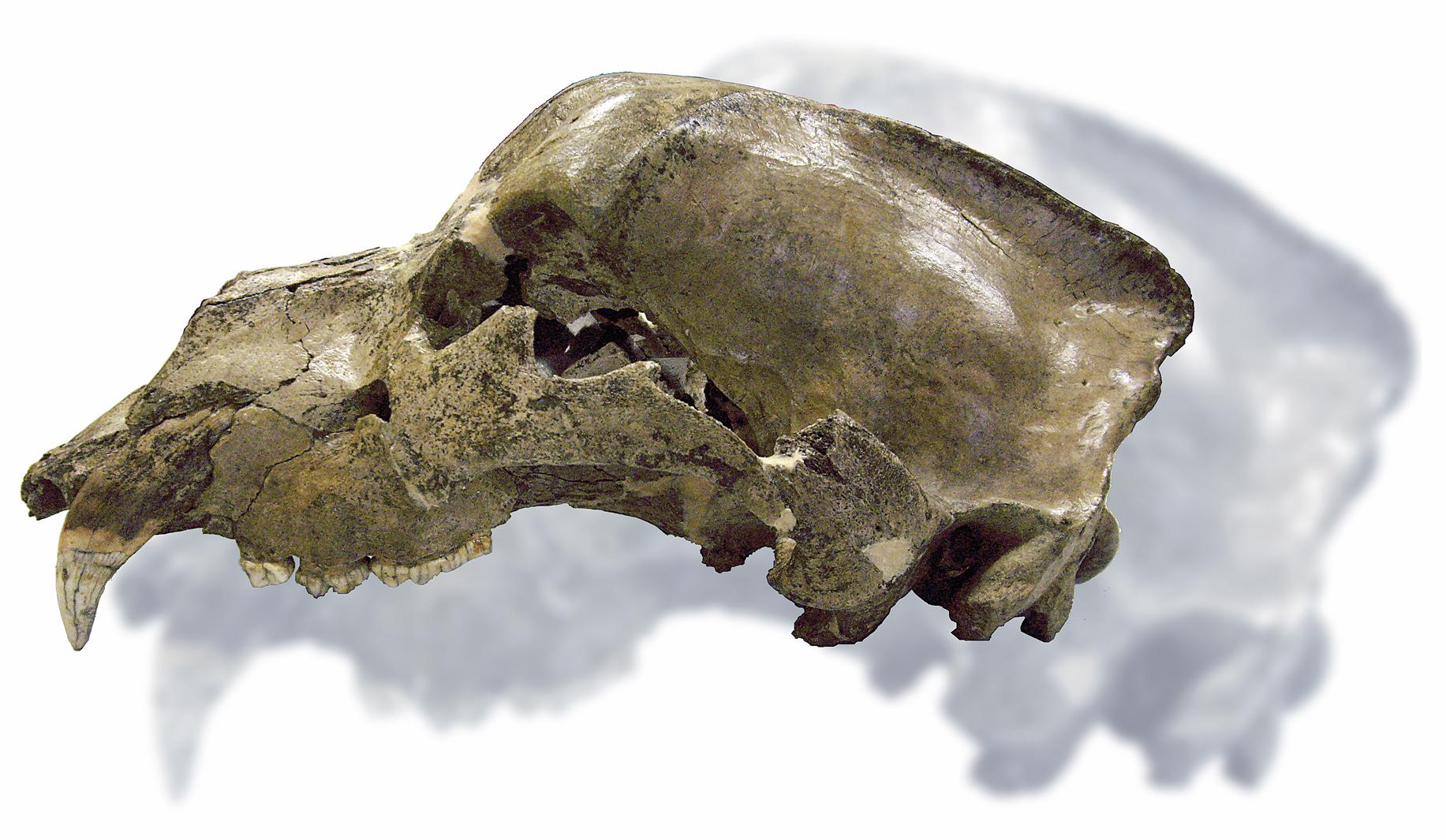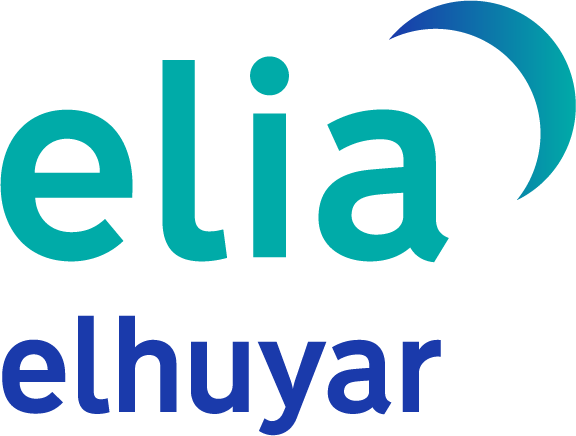The wanderings of a cave bear in the modern era
2012/05/01 Roa Zubia, Guillermo - Elhuyar Zientzia Iturria: Elhuyar aldizkaria

It looked like a side. The archaeologists of the UPV-EHU did not give special importance to the fossil buried in a corner of the cave of Lezetxiki. Many bones came out, which would not be the first rib. Archaeologists Aritza Villaluenga, Alvaro Arrizabalaga and Mari Jose Iriarte put several Asturian students working with this rib. It was Friday, July 20, 2007 and the last day of the three-week campaign, and that day there was a lot to do. But half an hour later it was clear that that fossil was not a side. It was something greater.
It was the skull of a cave bear. "The neurocranium was coming out, back of the face," recalls Villaluenga. "At first we didn't know what it was because until then we had not found a skull. It could also be a pelvis, an omoplato diagonally, or something like that. But when they were pulling the hole out of the eye we realized that it was skull and that it was complete."
Scientists are nervous. On that date they had to close the site until the next summer campaign and could not leave the skull there for a year. "In Lezetxiki you can get anyone and, if you protected the fossil, then we had to remove it," says Villaluenga. Therefore, it was an emergency. The fossil had to come out that same day. Instead of removing the bone from the ground, they did it with soil, leaving a hole 40 centimeters deep in the sediment. "Normally the excavation takes at least 15 days to go down 40 centimeters," said Villaluenga. It was introduced in a fruit basket, well protected with cushions, tied and transferred to the university, in Vitoria-Gasteiz.
Thus began the trajectory of the fossil skull of the bear in the modern era. He was buried in Lezetxiki thousands of years ago and left there in July 2007 to start the new laboratory vial.
Welcome to Yogi
The fossil is of a bear greater than the brown bear that remains today in Europe. It could be a cavernary bear, Ursus spelaeus, or his ancestor to Ursus deningeri . The fossil was missing from the lower jaw, but in the rest it was almost complete. And the skull was not alone. Over the years, more fossil ferments were discovered. "Three or four bears appeared in the same place, broken in different sizes," says Arrizabalaga. One of them, for example, has the whole body, but has no head.

They have appeared on an area less than ten square meters, which has a lot of logic. Unlike today's bears, experts believe that cave bears hibernated as a group. Occasionally some specimens would die while hibernating, which would explain that the remains of several bears were found together, as in Lezetxiki.
Vitoria's team was satisfied. Jokingly, the fossil was known as Yogi. But they couldn't start working with him until the bone came out of the ground and completed correctly. It is a very careful work and for this they resorted to specialists: She was transferred to the University of Burgos, where there are those who work in Atapuerca and other deposits, and delivered to María Cruz Ortega, restorer of UCM-ISIII.
Puzzle without model
The UCM-ISIII centre belongs to the Complutense University of Madrid. But these fossils are often analyzed by Ortega at the University of Burgos, in the Laboratory of Human Evolution. You have to travel many times between the two cities. Lezetxiki's skull arrived in Burgos in autumn 2007. "I remember that the skull arrived very well, well packed. It was in a fruit box, on a sponge and covered in plastic. Half of the skull was clean, but the rest was still stuck in damp lands," he says.
However, it did not begin to work as soon as the skull arrived. This work never starts right away. Once a fossil reaches the laboratory, it must leave the transported container and stay a few days in the new environment, waiting to adapt to the conditions of the same. Meanwhile, the conservation status of the fossil is analyzed and all possible information about the deposit is collected. "For proper cleaning we must know perfectly the geological characteristics of the original site and analyze the conditions in which the fossil has arrived. In this case it was brought in very good condition of conservation, but it had a great humidity. We let the moisture evaporate very slowly."
Ortega removed the sediment with the help of a stick, cleaning and separating the pieces one by one. "I always separate pieces of bone in more than one container, depending on their original position in the fossil, and I never try to put them together from the beginning," Ortega says. Each bone fragment may require specific treatment based on its degree of mineralization.
The upper part of the bear skull --neurocranio-, part of the frontal bone, parietal, occipital and the back of the neck were whole. But the jaw (face and palate) was very broken and the arches were deformed and abandoned. "This fossil had to bear a great weight," Ortega explains. But the team had an almost complete part, at least to start the recovery of the skull. "We turned back forward. On the one hand, we stick the pieces of palate together and to them half of the cymatic arches. The other half is attached to the neurocranium. And then the hardest thing: we were adding both sides."

The pieces are glued with Paraloid acrylic resin, a product that does not damage the bone (Ortega insists that it is very well studied) and applied with brushes that do not leave marks. "It's a very careful and careful job," he says, with a magnifying glass. Where pieces are missing, they had to add small resin pearls.
In this way, the fossil was gradually formed and waxed. XIX. Fossils collected in the 19th century have also been preserved. "It gives full guarantee," says Ortega. "All the techniques used are reversible, so they could be divided into fractions if necessary. The important thing is that with the result obtained a global reading of fossil information can be done."
Virtual bone fillets
The reading began quickly. And the first step of this reading was to analyze the exact shape of the formed fossil. It was held at the University of Burgos. Precisely, one of the participants in the fossil reconstruction, paleontologist Elena Santos, performed a skull tomography - a sudden CT. This is a three-dimensional study of the fossil, made by x-rays, composed of two-dimensional analysis of the sections of the bone.
"At the University of Burgos we have an industrial tomograph that we installed in 2005 and was the first in Spain," says Santos. It is a large tomograph that allows to examine objects of half a meter high and 40 cm wide". In addition, they can work more accurately than with a hospital tomograph. "Being fossil and dead will not be affected by X-ray radiation. A person should be radiated as little as possible and get the information as soon as possible. In the case of a fossil, on the contrary, it is about analyzing it as accurately as possible."
In fact, in Santos' tomography from one section to another there were only 500 microns, half a millimeter. With this precision, the total fossil CT is composed of analysis of 900 sections, each of which has generated a 4 Mb image. "The machine has enough capacity to make the distance between sections 100 microns, but I didn't do it with that precision because the computer couldn't manage that amount of data."
The result is a three-dimensional skull model suitable for the work of Saints. "I can work with him every day without having to go anywhere and without endangering the skull itself. Working with him, I don't have to manipulate the real bone." This model provides information on the precise geometry of the interior gaps. Santos analyzes the forehead bone and the frontal sinuses (the frontal sinuses are holes that relieve the skull and also serve for the thermoregulation of the brain), the hole of the brain and a small bone called basiokzipital. "These parts I analyze because they serve to diagnose the species," explains Santos. "I look at its exact shape and degree of development, and compare it with the data of all species to know the evolution of each fossil."

The skull of Lezetxiki has special characteristics. According to experts from the University of Burgos, almost all belong to the Ursus spelaeus or the cave bear, but it also has a few characteristics of its ancestor, the Ursus deningeri. "The bear of Lezetxiki has an earlier yew that is not in Ursus spelaeus," explains Santos, "and the curvature of the skull is older than that of other spelaeus I have studied. We therefore have a couple of characteristics of Ursus deningeri. However, it is an almost traditional spelaeus. spelaeus is 80% and 20% is deningeri. It can be said that it is the first Ursus spelaeus of the Iberian peninsula".
Bear does not say when it is
While the skull was in Burgos, Vitoria's team continued to work because in addition to the fossil we have to study the environment. What is discovered in the environment can be of great importance, for example, for the dated fossil. But in this case it is very complicated. "With the chronology we have in Lezetxiki it is very difficult to have a specific dating. We are out of the capacity of some methods." Sediments contribute to the determination of dating, that is, to know the location of the fossil at a stratigraphic scale, but the best way to approach dating is by studying the teeth of herbivores present in the environment, in which Lezetxiki is also a difficult deposit. "No remains of great herbivores (horses, bison, etc.) have been found. in Lezetxiki. It seems there was only one man and one bear," says Villaluenga.
In the spring of 2008, the fossil returned to Vitoria, where many other lines of research began. On the one hand, paleontologist Pedro Castaños took action. "Every bone in the skeleton is measured in a certain way," explains Villaluenga. "You have to measure certain parameters to the bone." And with these classic measurements you can calculate the size of the bear when it was alive.
On the other hand, the UPV/EHU team sought events after the bear's death. Villaluenga himself did it. "My specialty is tafonomy, that is, I see if other carnivores took bones, that is, if there are marks of fangs of other carnivores in the bone, if the ends of the bones are eaten, etc." He not only took the skull, but he did it with all the pieces of bone around him. "What I do is see what marks they are, in what bones they appear, in what part of the bone and then take a picture of them. When you have a large number of bones, compared to other places, they look if they appear in the same area or if there are other models." In the case of the Lezetxiki fossil, at least, the skull had no canine mark.
It is difficult to determine the life and death of a certain bear. But a fossil, like this skull, can have a lot of information. It will have a lot, and scientists today cannot access all the information. Therefore, they must keep the fossil as best as possible. "Research lasts for many years," explains Villaluenga. "They can never be terminated. Within 20 years another researcher could come with a new methodology and work on the same bone." And this spectacular skull awaits you, a witness of prehistory on the table of scientists.

Gai honi buruzko eduki gehiago
Elhuyarrek garatutako teknologia







